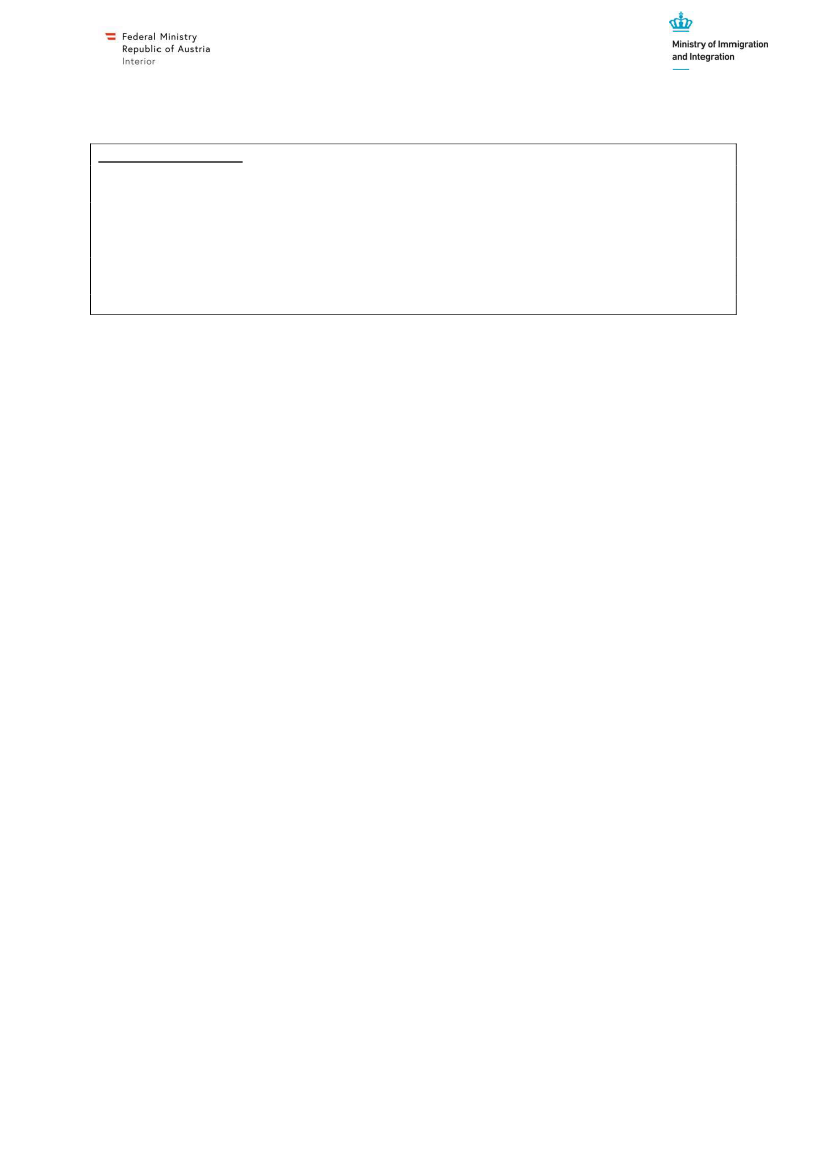
Vision for a Better Protection System in a Globalized World
Mending a Broken System
Introductory remarks:
The purpose of this paper is to address the obvious: the present asylum system is dysfunctional in
many ways, not fit for a globalized world and needs to be mended.
Until now, we developed a lot of strategies, action plans, papers and bundles of measures without
having a commonly agreed goal.
This is a vision paper. While it cannot refer to every detail, it ensures a common direction.
It is a compass - it should ensure that we, for the first time, strive towards the same long-term goal.
Without having a clearly defined goal we will not find the way.
This vision builds on and is meant to supplement the European Council conclusions from June 2018.
Migration and asylum
policy will shape Europe’s future.
Migration brings change: for migrants, for societies in countries of origin, and for the citizens
of destination countries. Change is often deeply felt and politically contested.
Many citizens have lost trust in their governments’ ability to deal with the challenges of
irregular migration. In the current system it´s not only the Member States of the EU that
decide who enters the European Union but first and foremost smugglers (and to a lesser
extent migrants themselves). The result is a massive loss of trust. Trust will not be restored
simply by short-term partial strategies and measures at EU-level. There is an urgent need for
an alternative, unifying vision. The priority must be to reassure our citizens by creating a
sustainable policy framework that simultaneously has democratic support, meets our legal
and ethical obligations, and is sufficiently prudent to avoid a legacy of regrets.
Given our own histories, European countries recognise and appreciate the value of the 1951
Refugee Convention. It will always be a core value of the European Union and its Member
States to provide protection to people fleeing persecution due to their race, religion,
nationality, membership of a particular social group, or political opinion.
Regrettably, the way in which the 1951 Refugee Convention is currently being implemented,
combined with increased opportunities for mobility and communication created by
globalization, is enabling increasing numbers of irregular migrants and refugees, who have
already found protection in another country, to enter Europe through our asylum systems. It
has never been the intention of the 1951 Refugee Convention to promote transcontinental,
economically induced secondary migration.
Through this historically determined conceptual weakness fraud is rewarded. Many simply
disappear into the informal economy once their asylum claims are rejected. This possibility
has long been abused by organized criminal networks that boost irregular movement by
selling false hope of a better life in the EU, resulting in thousands of deaths, exploitation, and
modern slavery. In spite of these fatal consequences, there are still people who
–
for various
reasons
–
praise and strongly support the present system.
The criminal networks rely upon appeals to the moral conscience of Europeans, suggesting
that we are collectively guilty of the resulting death and despair; suggesting that it is our duty
to offer permanent integration to all the people criminals have lured into taking perilous land
routes or boat journeys across the Mediterranean. In such a Darwinist system the fittest and
not the most vulnerable are rewarded. We are faced with a tragic humanitarian situation that
results in the loss of thousands of lives every year. We cannot accept this any longer. We
must prevent this unnecessary death and suffering, while ensuring that our asylum and
migration policies are sustainable. This is why our highest ethical and political priorities are to
develop a better protection system for a globalized world.